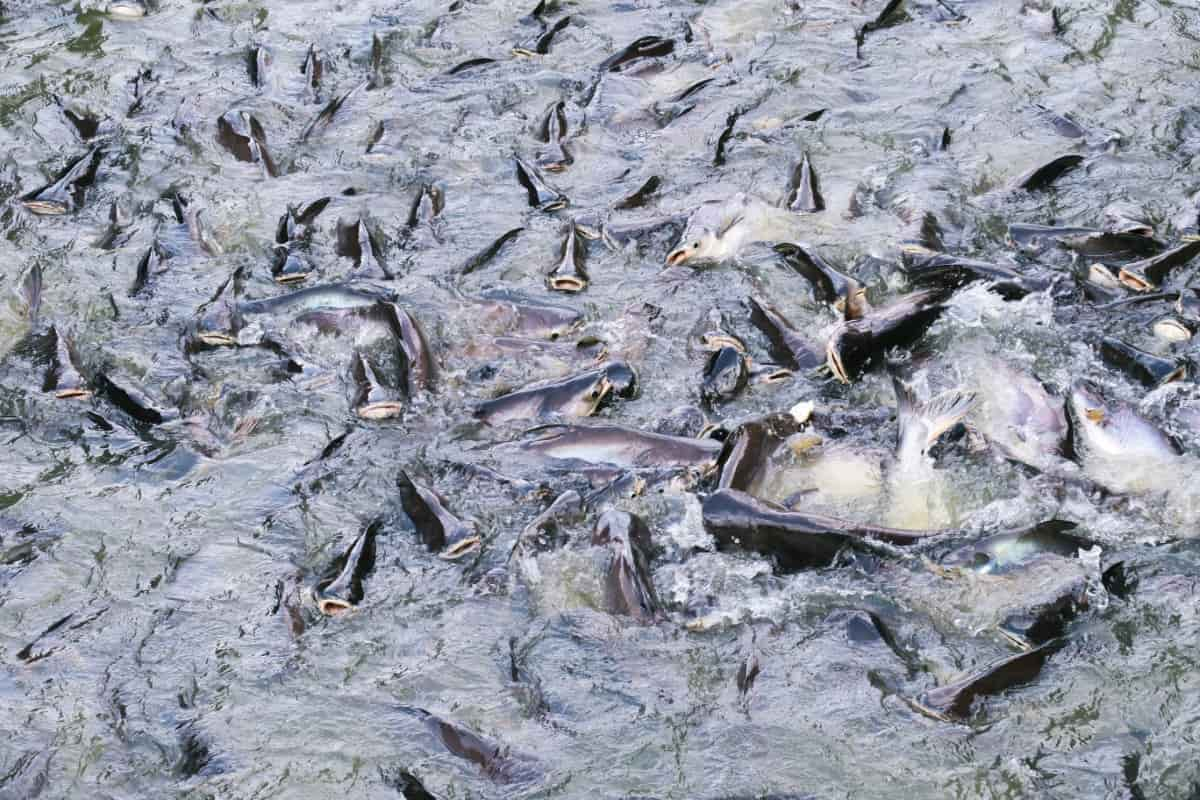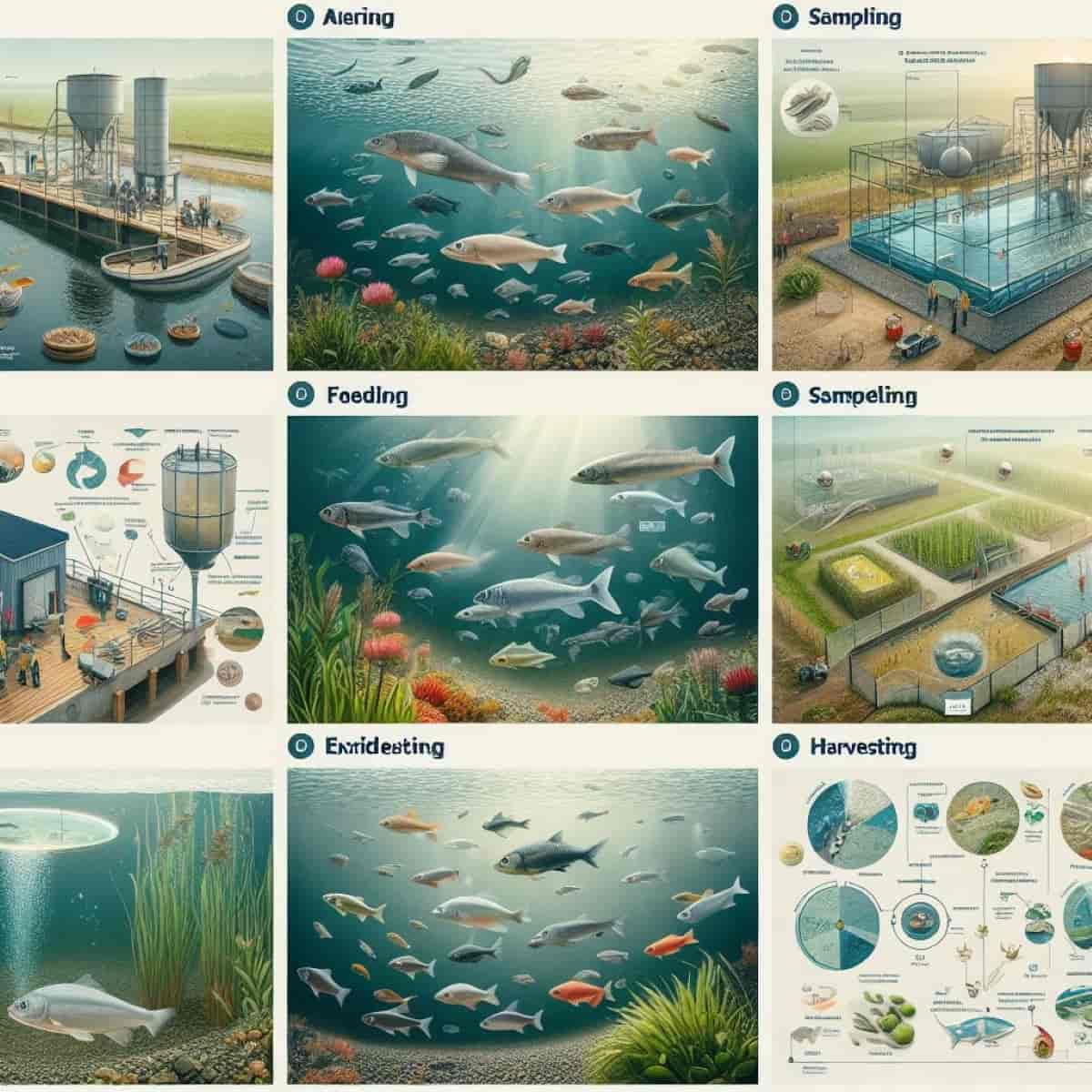Biofloc technology is a sustainable and eco-friendly aquaculture approach that promotes the conversion of pond toxins into valuable nutrients. It involves the cultivation of beneficial microbial communities within the water, forming flocs or aggregates. These flocs serve as both a biofilter and a source of nutrition for aquatic organisms, contributing to enhanced water quality and increased productivity.

The system relies on the development of dense microbial populations, primarily bacteria, and microalgae, which metabolize organic matter, ammonia, and other toxins. This process not only mitigates water pollution but also transforms harmful compounds into essential nutrients. Biofloc technology offers a cost-effective and environmentally friendly alternative to traditional aquaculture methods, reducing the need for water exchange and minimizing environmental impact. As a result, this innovative technology is gaining popularity in the aquaculture industry, fostering sustainable practices and improving overall resource utilization.
Convert Pond Toxins to Useful Nutrients Through Biofloc
Pond Toxins: Types and Sources
Pond toxins in aquaculture systems can arise from various sources, posing threats to aquatic ecosystems and the health of cultured organisms. Common types include ammonia, nitrite, nitrate, and organic pollutants originating from uneaten feed and excretion. These toxins can accumulate in pond water, leading to poor water quality, stressed aquatic life, and reduced productivity.
Ammonia is one of the byproducts of fish metabolism and decomposing organic matter, while nitrite and nitrate result from the microbial breakdown of ammonia. Organic pollutants stem from excess feed and fecal matter, contributing to oxygen depletion and harmful algal blooms. Addressing pond toxins is crucial for sustainable aquaculture. Biofloc technology emerges as a promising solution, leveraging microbial communities to convert toxins into valuable biomass.
Converting Pond Toxins Into Useful Nutrients
Converting pond toxins into useful nutrients is achieved through innovative approaches like Biofloc Technology. Pond toxins, including ammonia, nitrite, nitrate, and organic pollutants, are byproducts of aquaculture processes that can degrade water quality. Biofloc technology harnesses microbial communities, particularly bacteria, and microalgae, to transform these harmful compounds into beneficial biomass.
This process not only mitigates water pollution but also enhances nutrient recycling, promoting a sustainable and self-regulating aquaculture environment. By efficiently converting pond toxins into valuable nutrients, Biofloc Technology contributes to improved water quality, increased productivity, and environmentally responsible aquaculture practices.
The Role of Microorganisms in Biofloc Technology
Microorganisms play a pivotal role in Biofloc Technology by forming dynamic and intricate communities within aquatic environments. The heart of this innovative approach lies in the cultivation of beneficial bacteria, archaea, fungi, and microalgae. These microorganisms create bioflocs—aggregates of organic matter and microbes—that serve as both a biofilter and a nutrient source. Beneficial bacteria, particularly heterotrophic and autotrophic strains, contribute to the conversion of ammonia and other organic compounds into less harmful substances.
In case you missed it: Murrel Culture in Ponds: Best Practices to Setup a Murrel Pond

Additionally, microalgae present in bioflocs photosynthesize, producing oxygen and assimilating carbon dioxide. These microbial communities establish a balanced ecosystem, enhancing water quality and providing a natural food source for cultured organisms. Through nutrient cycling and metabolic processes, microorganisms in Biofloc Technology effectively contribute to waste remediation, water purification, and the promotion of sustainable aquaculture practices.
How Biofloc Technology Works
Biofloc Technology operates by cultivating dense microbial communities in aquaculture ponds. These communities, comprising bacteria, archaea, fungi, and microalgae, form aggregates called bioflocs. The key process involves the conversion of organic waste, uneaten feed, and toxins into nutrient-rich biomass. Heterotrophic bacteria break down organic matter, producing microbial protein.
Meanwhile, autotrophic bacteria and microalgae engage in photosynthesis, generating oxygen and assimilating carbon dioxide. The bioflocs serve as both a natural biofilter, removing harmful substances, and a supplementary food source for cultured organisms. This symbiotic relationship fosters a self-regulating ecosystem, improving water quality, minimizing environmental impact, and promoting sustainable aquaculture practices.
Benefits of Converting Pond Toxins
Converting pond toxins through approaches like Biofloc Technology offers numerous benefits to aquaculture and the environment. Firstly, this process enhances water quality by reducing levels of toxins like ammonia, nitrite, and nitrate, creating a healthier environment for aquatic organisms. Transforming these harmful compounds into valuable biomass promotes nutrient recycling, minimizing the need for water exchange and decreasing environmental impact.
Moreover, the conversion of pond toxins into nutrient-rich bioflocs provides a supplementary food source for cultured organisms, fostering increased productivity and growth. This approach is environmentally sustainable, as it mitigates the discharge of pollutants into surrounding ecosystems. Additionally, it contributes to cost-effectiveness in aquaculture operations by optimizing resource utilization and reducing dependency on external inputs.
Applications of Biofloc Technology
Firstly, it serves as an efficient water treatment method by converting organic waste and toxins into nutrient-rich bioflocs, promoting water quality. This technology is particularly advantageous in intensive aquaculture systems, where it minimizes the need for water exchange and reduces environmental impact. Biofloc systems create a natural and nutritious food source, enhancing feed efficiency and promoting the growth of cultured organisms—additionally, the technology aids in disease prevention by establishing a competitive microbial environment that suppresses harmful pathogens.
In case you missed it: How Many Koi in a 2000 Gallon Pond: Optimal Koi Stocking Density

Moreover, Biofloc Technology allows for higher stocking densities, optimizing space and resource utilization. It is adaptable to various aquaculture settings, including shrimp, fish, and crustacean farming. The versatility of applications, coupled with its environmental and economic benefits, makes Biofloc Technology a valuable tool for advancing sustainable and responsible practices in modern aquaculture.
Advantages of Using Biofloc Technology
Biofloc Technology offers several advantages in aquaculture. Firstly, it improves water quality by converting organic waste into nutrient-rich bioflocs, reducing the reliance on water exchange. This enhances environmental sustainability and minimizes the impact on surrounding ecosystems. Secondly, the bioflocs serve as a supplementary food source, promoting better feed efficiency and growth in cultured organisms.
Also, Biofloc systems facilitate higher stocking densities, optimizing space and resource utilization—lastly, the technology aids in disease prevention by creating a competitive microbial environment. Overall, Biofloc Technology contributes to more efficient, sustainable, and environmentally friendly aquaculture practices.
Challenges and Limitations of Biofloc Technology
One primary concern is the potential for disease outbreaks within the dense microbial communities. Maintaining a proper balance and preventing the dominance of harmful pathogens requires careful management. Additionally, biofloc systems may experience oxygen fluctuations, impacting the health of aquatic organisms.
There are also challenges related to system complexity and the need for technical expertise, making it less accessible for inexperienced aquaculturists. The initial setup costs for biofloc systems, including aeration and water quality monitoring equipment, can be relatively high. Furthermore, biofloc systems may not be universally applicable, as they require specific environmental conditions and may not suit all aquaculture species.
In case you missed it: How to Build Fish Pond in 10 Steps: DIY Guide for Beginners

In some cases, biofloc systems may produce excess sludge, necessitating additional management strategies. Despite these challenges, ongoing research and advancements in biofloc technology aim to address limitations, making it a promising and evolving approach to sustainable aquaculture practices.
Conclusion
In conclusion, the conversion of pond toxins into valuable nutrients through Biofloc Technology offers a sustainable and eco-friendly solution for aquaculture. By harnessing microbial communities to transform harmful compounds into beneficial biomass, this innovative approach enhances water quality, promotes efficient resource utilization, and fosters environmentally responsible practices.
- Feed Your Flock for Less: Top 10 Tips to Save on Chicken Feed
- Ultimate Guide to Ossabaw Island Hog: Breeding, Raising, Diet, and Care
- Hatching Answers: The Top 10 Reasons Your Chickens Aren’t Laying Eggs
- Eggs and Economics: Breaking Down the Cost of Raising Backyard Chickens
- Defend Your Greens: Proven Methods to Keep Iguanas Out of Your Garden
- Ultimate Guide to Cinnamon Queen Chicken: A Comprehensive Guide for Beginners
- Ultimate Guide to California Tan Chicken: Breeding, Raising, Diet, Egg-Production and Care
- Ultimate Guide to Marsh Daisy Chicken: Breeding, Raising, Diet, and Care
- 10 Types of Chicken Farming Businesses You Can Start for Profits